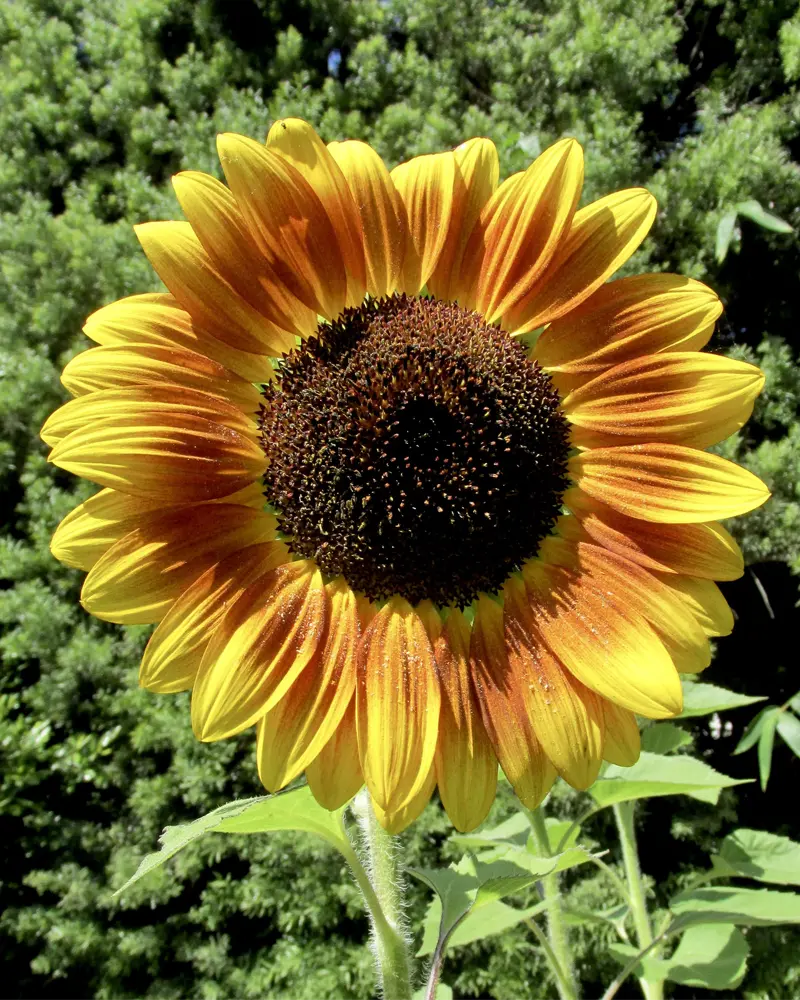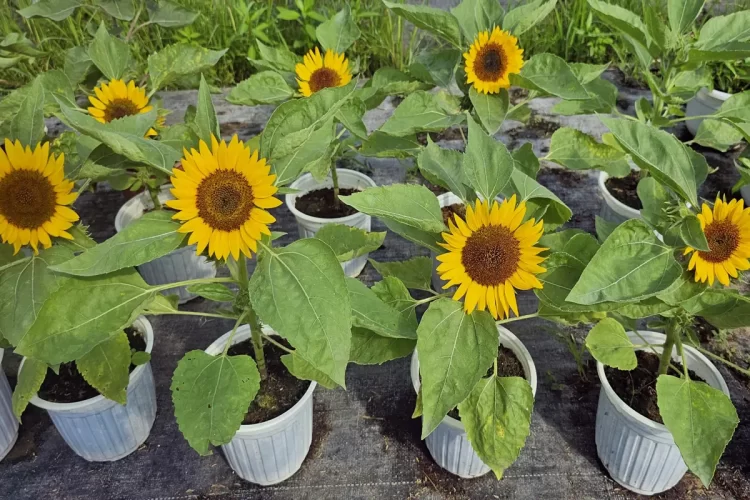Sunflowers (Helianthus annuus) are iconic plants known for their towering heights, vibrant yellow petals, and cheerful faces that follow the sun. Cultivated for their beauty as well as for seeds, oils, and animal feed, sunflowers are highly versatile and relatively easy to grow. In this guide, we will walk you through everything you need to know about growing healthy sunflowers, including tips on soil preparation, watering, pest management, and more. Let’s dive in to help you grow your sunflowers to their full potential.
Understanding Sunflower Varieties
Sunflowers come in various types and sizes, from dwarf varieties that are perfect for container gardens to giant cultivars that can reach heights of over 12 feet. Here are some popular sunflower types:
- Giant Sunflowers: Known for their incredible height, these sunflowers can reach over 12 feet. Varieties include ‘Mammoth’ and ‘American Giant’.
- Dwarf Sunflowers: Compact varieties, such as ‘Teddy Bear’ and ‘Sunspot’, are perfect for small gardens and pots.
- Colored Sunflowers: While yellow is the classic color, some varieties come in red, orange, or bi-colored petals, like ‘Autumn Beauty’ and ‘Evening Sun’.
Each type of sunflower has different growth needs, so choosing a variety that suits your space and climate is essential.
Ideal Growing Conditions for Sunflowers
Sunlight Requirements
Sunflowers thrive in full sunlight and need at least 6–8 hours of direct sunlight per day. This ample sunlight promotes their rapid growth and large blooms. They perform best in sunny, open locations that allow them to stretch toward the sun.
Soil Preparation
Well-draining, nutrient-rich soil is key for healthy sunflowers. Before planting, loosen the soil to a depth of at least 12 inches and amend it with organic matter, such as compost or well-aged manure. Sunflowers prefer a soil pH between 6.0 and 7.5. If your soil is clay-heavy, consider adding sand or compost to improve drainage.
Watering Needs
While sunflowers are somewhat drought-tolerant, consistent moisture during germination and early growth phases is essential. Water deeply, but avoid waterlogged soil, as it can lead to root rot. A good rule of thumb is to water once or twice a week, ensuring the top 6 inches of soil remains moist.
How to Plant Sunflowers: Step-by-Step Guide

- Choose the Right Planting Time
Sunflowers should be planted in late spring once the danger of frost has passed, as they require warm soil to germinate. - Prepare the Planting Site
Select a sunny, sheltered location with well-drained soil. Break up the soil and add organic matter to improve its fertility. - Sow the Seeds
- For giant varieties, space seeds 18–24 inches apart.
- For smaller sunflowers, 6–12 inches of spacing is sufficient.
- Sow the seeds about 1 inch deep.
- Water After Planting
Give the seeds a thorough watering to kick-start root development.
Caring for Sunflowers: Essential Tips
Fertilization
Sunflowers are heavy feeders, particularly of nitrogen, phosphorus, and potassium. A balanced fertilizer applied at the time of planting can encourage strong stem growth and vibrant blooms. Use a 10-10-10 fertilizer once or twice during the growing season to supply essential nutrients.
Staking for Support
Tall sunflower varieties often require staking, especially in windy areas. Insert a stake into the ground near each plant’s base and loosely tie the stem to the stake with soft material. This support prevents bending or breakage, especially as the flower head becomes heavy with seeds.
Pruning and Deadheading
Taking off spent flowers, a process called deadheading promotes additional blooms. Trim off any dead or faded blooms to help the plant focus its energy on new growth. For sunflowers grown for seed harvesting, avoid deadheading once seed heads have formed.
Pest and Disease Control
Sunflowers are hardy, but they can be susceptible to aphids, caterpillars, and fungal diseases. Here are some common issues and how to manage them:
- Aphids: Use insecticidal soap or neem oil to deter aphids.
- Caterpillars: Handpick or introduce natural predators, like ladybugs, to control caterpillar infestations.
- Powdery Mildew: Avoid watering from above and ensure adequate spacing between plants to improve air circulation.
Harvesting Sunflower Seeds

One of the rewards of growing sunflowers is harvesting their seeds, which can be enjoyed as snacks, used for bird feed, or replanted the following season.
When to Harvest
Harvest seeds when the back of the sunflower head turns yellow to brown and the petals begin to dry and fall. This change indicates that the seeds are mature and ready for harvest.
How to Harvest Sunflower Seeds
- Cut the Head
Use garden shears to cut the sunflower head, leaving about 12 inches of stem. - Dry the Head
Hang the head in a warm, dry place away from pests. - Extract the Seeds
Rub your hand over the head to release the seeds, or gently tap it to dislodge them.
Storing Sunflower Seeds
Once harvested, store sunflower seeds in a cool, dry place. If you plan to plant them next season, keep the seeds in a sealed container to protect them from moisture and pests.
Sunflowers in Landscape Design
Sunflowers are a beautiful addition to any garden and serve multiple purposes beyond their visual appeal. Here are some ways to incorporate sunflowers into your landscape:
- Backdrops and Screens: Use tall sunflowers as natural privacy screens or to create a backdrop for shorter plants.
- Pollinator Gardens: Sunflowers attract bees, butterflies, and other beneficial pollinators, making them ideal for pollinator-friendly gardens.
- Edging and Borders: Compact and dwarf varieties make excellent borders or focal points in garden beds.
Sunflower Companion Planting
Sunflowers can benefit other plants in the garden through companion planting. Here are a few effective pairings:
- Cucumbers and Squash: Sunflowers provide natural shade for these vines, reducing heat stress.
- Corn and Beans: Sunflowers attract pollinators, which in turn help pollinate corn and beans.
- Herbs: Planting herbs like basil or thyme near sunflowers can help repel pests.
Frequently Asked Questions
Do sunflowers need a lot of water?
Sunflowers require consistent moisture, particularly during the early stages of growth. Once established, they can tolerate short dry spells but should be watered deeply once or twice a week.
How long do sunflowers take to bloom?
Most sunflowers bloom within 70–100 days of planting, depending on the variety and growing conditions.
Can sunflowers grow in pots?
Yes, dwarf sunflower varieties can thrive in pots. Use a well-draining potting mix and place the pot in a location that receives full sunlight.
Do sunflowers grow back every year?
Most sunflowers are annuals and complete their life cycle in one season. However, some perennial varieties, such as Helianthus maximiliani, will return each year.


